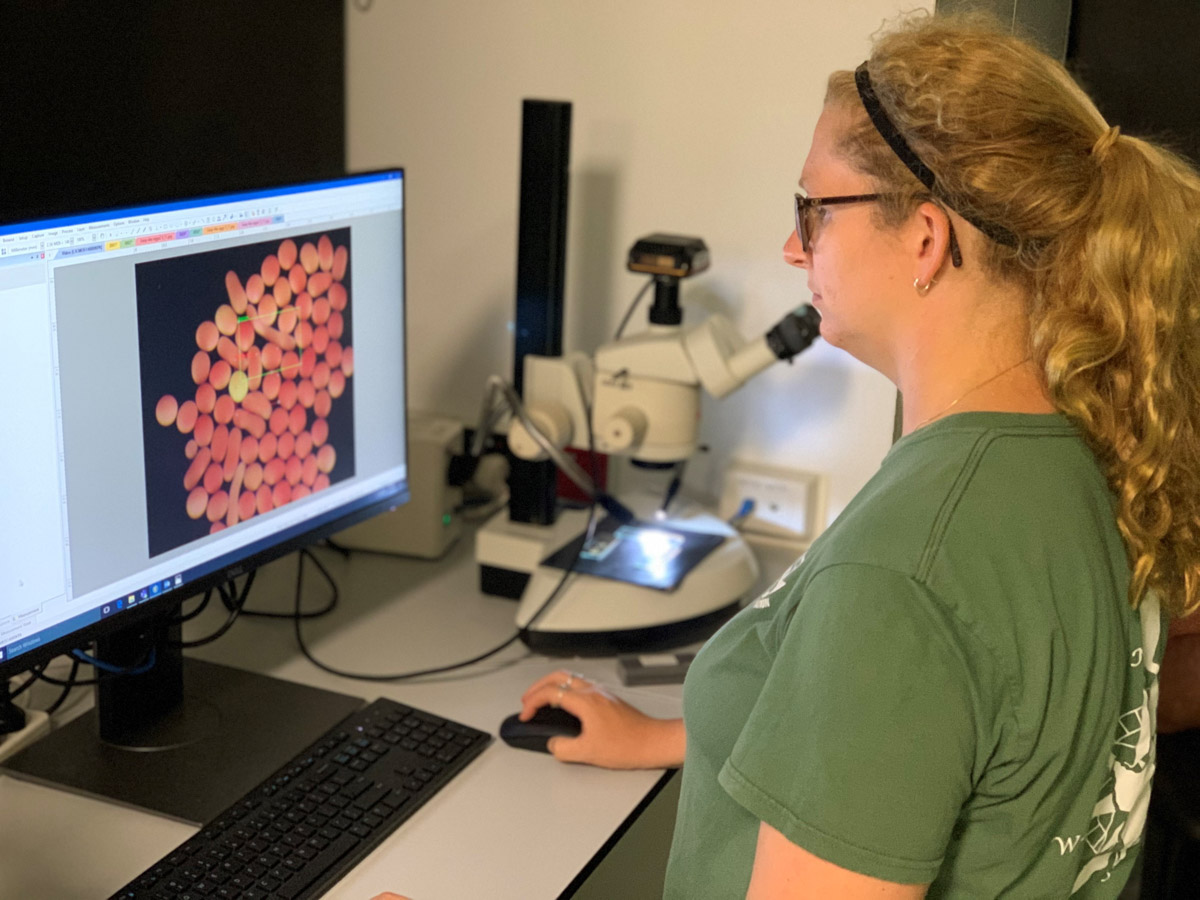
Global S&T Development Trend Analysis Platform of Resources and Environment
| Coral spawning sows seeds of hope for reef recovery research | |
| admin | |
| 2020-11-13 | |
| 发布年 | 2020 |
| 语种 | 英语 |
| 国家 | 澳大利亚 |
| 领域 | 资源环境 |
| 正文(英文) | Scientists at the Australian Institute of Marine Science (AIMS) have turned nocturnal over the last week during the first Great Barrier Reef mass coral spawning of the year, to further develop a method of reef restoration called ‘coral seeding’. Coral seeding refers to restoration methods aimed at introducing young corals onto a reef, to boost the number that will be surviving to maturity and thus aiding its recovery. One approach to coral seeding, and the one being investigated by the AIMS Keppel Island Project Team, involves small, portable devices that young coral attach to in aquaria. Just days after spawning in aquaria, young, swimming coral larvae find space to settle down on the device and develop into small coral polyps. Once the coral polyps are well established, the devices are placed or ‘sown’ onto reefs where the corals grow and spread onto the natural reef surface, potentially helping speed the recovery of reefs from damage such as cyclones and coral bleaching. Dr Carly Randall, restoration ecologist and science lead for the AIMS Keppel Island Coral Project, said coral spawning is an important natural time of renewal for reefs, and understanding what happens to baby corals in the first days of their life is key to reef restoration methods aimed at boosting the natural recovery process. “In the first week of a coral’s life, the tiny swimming coral larvae experience a ‘bottleneck’ in their survival. While billions of fertilised eggs are sent up into the sea, only a tiny fraction of the baby corals make it onto the reef surface and survive,” Dr Randall said. “Our research is focused on understanding what factors drive this bottleneck, how they differ among reef sites and coral species, and testing methods to overcome this challenge and apply them in the future in our restoration efforts.” “We are also trialling several device designs that already show promise for coral seeding. By comparing growth and survival of the small corals among different designs and finding the winners, we aim to help boost the natural recovery process of reefs.” Eighty-five corals from ten different species were collected from reefs around the Keppel Islands on the southern Great Barrier Reef in October. They were brought 700km north by sea on the RV Cape Ferguson to spawn in the AIMS National Sea Simulator, a sophisticated research aquarium facility at the AIMS HQ in Townsville. In early 2021, the team will bring the devices and attached corals back to different reef sites throughout the Keppel Islands and their survival will be monitored over the coming months. The method of coral seeding is still in development, however early testing shows it has potential to be scaled up to restore large areas of reef to help faster recovery after disturbances, as well as cost effective. “Coral seeding is just one of a range of tools scientists are testing for their potential to help the Great Barrier Reef recover from and adapt to the impacts of climate change,” Dr Randall said. “The Great Barrier Reef is enormous - the size of a small country. As climate change marches on, it is imperative that we mitigate carbon dioxide emissions, continue to manage our reefs and test ways in which we can assist the reef over large areas, and that are affordable.” Dr Cathie Page, postdoctoral fellow in coral reef restoration said reefs of the Keppel Islands are an ideal natural laboratory for research. “The Keppel Island reefs are a great example of Australia’s inshore reefs, meaning they are close to shore and are easily accessible by land or boat. The reefs are also wonderfully diverse and vibrant, and are in good condition, despite past damage,” Dr Page said. “Reefs around the Keppel Islands suffered from severe coral bleaching in early 2020 due to a marine heatwave. Our surveys in October showed some coral mortality, however many corals had survived and recovered their colouration and some are ready to reproduce, a hopeful sign of resilience.” The Keppel Islands Coral Project is a five-year research project being conducted in partnership with the Woppaburra Traditional Owners. Learn more about the Keppel Islands Coral Project News - Sea country mapping kicks off two-way knowledge sharing in the Keppels |
| URL | 查看原文 |
| 来源平台 | Australian Institute of Marine Science |
| 文献类型 | 新闻 |
| 条目标识符 | http://119.78.100.173/C666/handle/2XK7JSWQ/303118 |
| 专题 | 资源环境科学 |
| 推荐引用方式 GB/T 7714 | admin. Coral spawning sows seeds of hope for reef recovery research. 2020. |
| 条目包含的文件 | 条目无相关文件。 | |||||
| 个性服务 |
| 推荐该条目 |
| 保存到收藏夹 |
| 查看访问统计 |
| 导出为Endnote文件 |
| 谷歌学术 |
| 谷歌学术中相似的文章 |
| [admin]的文章 |
| 百度学术 |
| 百度学术中相似的文章 |
| [admin]的文章 |
| 必应学术 |
| 必应学术中相似的文章 |
| [admin]的文章 |
| 相关权益政策 |
| 暂无数据 |
| 收藏/分享 |
除非特别说明,本系统中所有内容都受版权保护,并保留所有权利。
修改评论